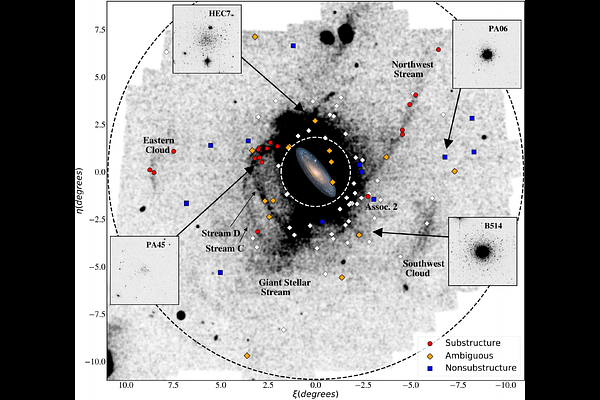Accreted Globular Clusters and Horizontal Branch Morphology in the Outer Halo of M31

Accreted Globular Clusters and Horizontal Branch Morphology in the Outer Halo of M31
Gracie McGill, Annette M. N. Ferguson, Dougal Mackey, Avon P. Huxor, Geraint F. Lewis, Nicolas F. Martin, Alan W. McConnachie, Charli M. Sakari, Nial R. Tanvir, Kim A. Venn
AbstractM31 hosts a rich population of outer halo ($R_{\rm{proj}} > 25$ kpc) globular clusters (GCs), many of which show strong evidence for spatial and/or kinematical associations with large-scale tidal debris features. We present deep Hubble Space Telescope photometry of 48 halo GCs, including 18 with clear ties to stellar streams and 13 with potential associations. Using the colour-magnitude diagrams (CMDs), we quantify the horizontal branch (HB) morphologies and employ new empirical relationships, calibrated on Milky Way (MW) GCs, to consistently derive metallicities and line-of-sight extinctions. We find a remarkable correlation between HB morphology and the presence of substructure: GCs with very red HBs are almost exclusively associated with substructure, while non-substructure GCs have extended blue HBs. This provides the first direct evidence that red HB halo clusters originate from satellite accretion, a notion introduced nearly 50 years ago from MW studies which has remained unconfirmed until now. In addition to a more metal-rich tail, the substructure GC sample also contains a few clusters with very low metallicities and red HBs, unlike any objects known in the MW. We suggest these are recently accreted young clusters, supporting the growing evidence that M31 has experienced a more prolonged accretion history than the MW.